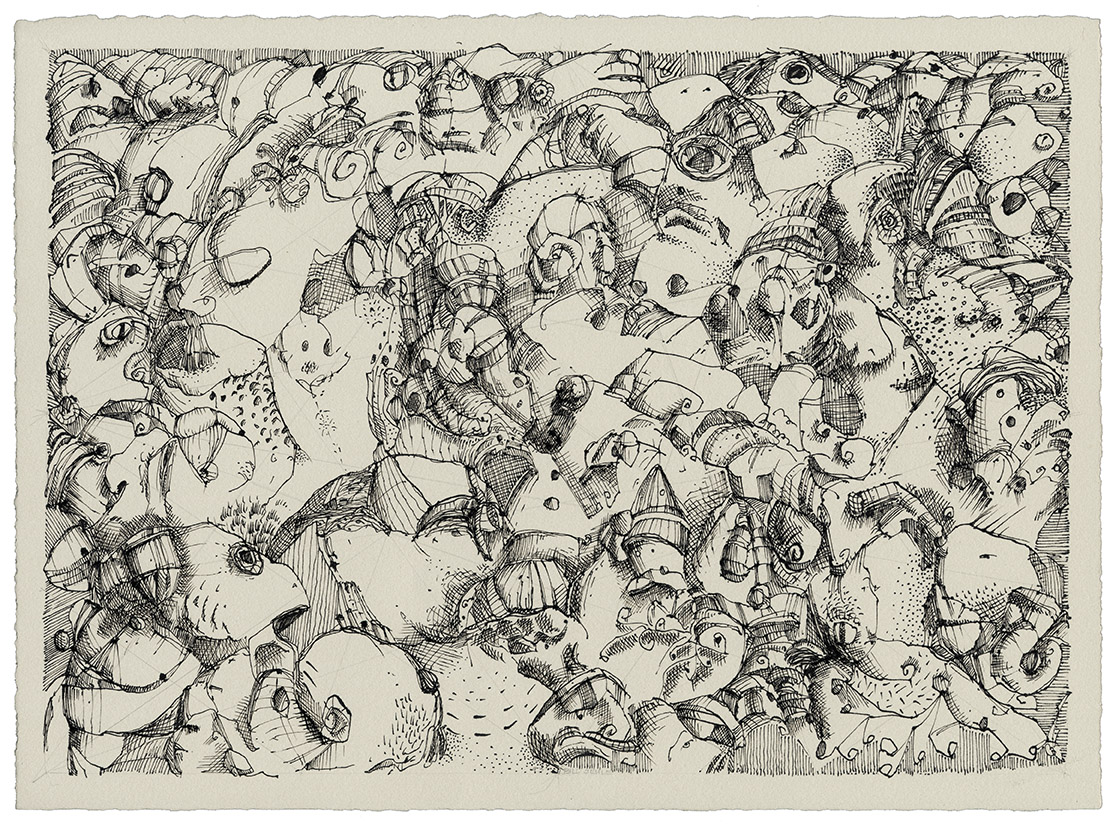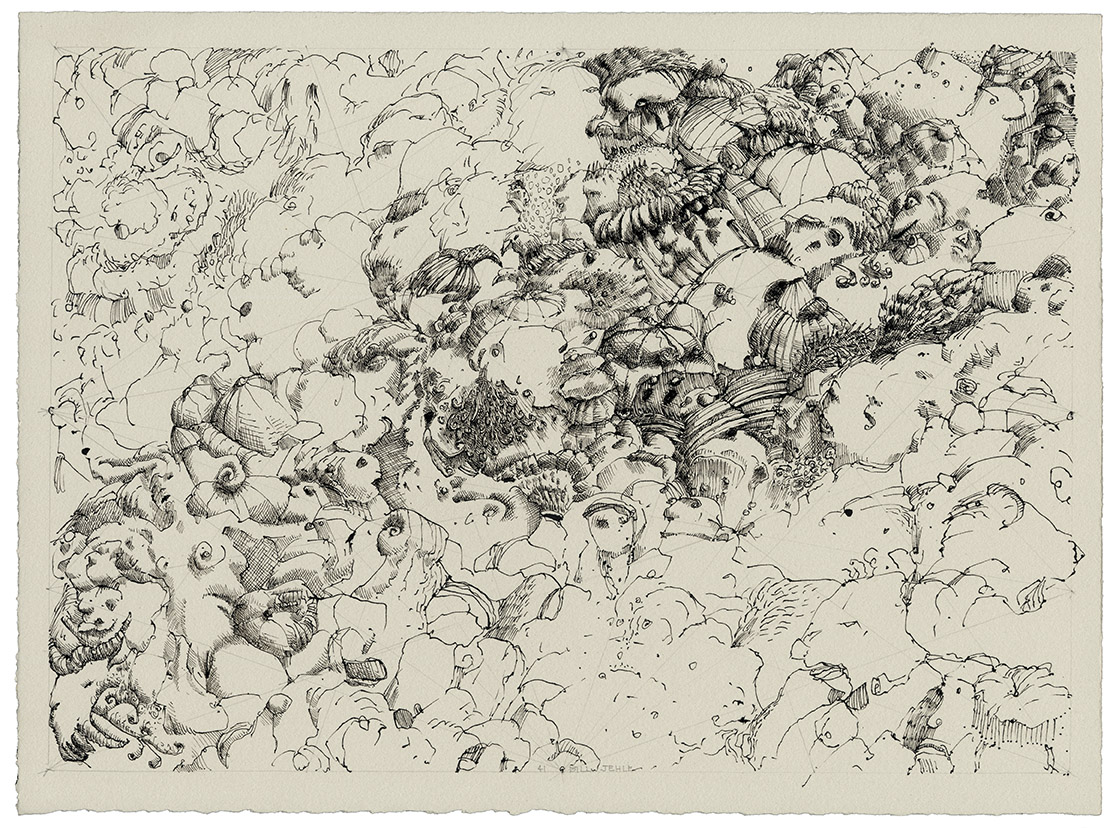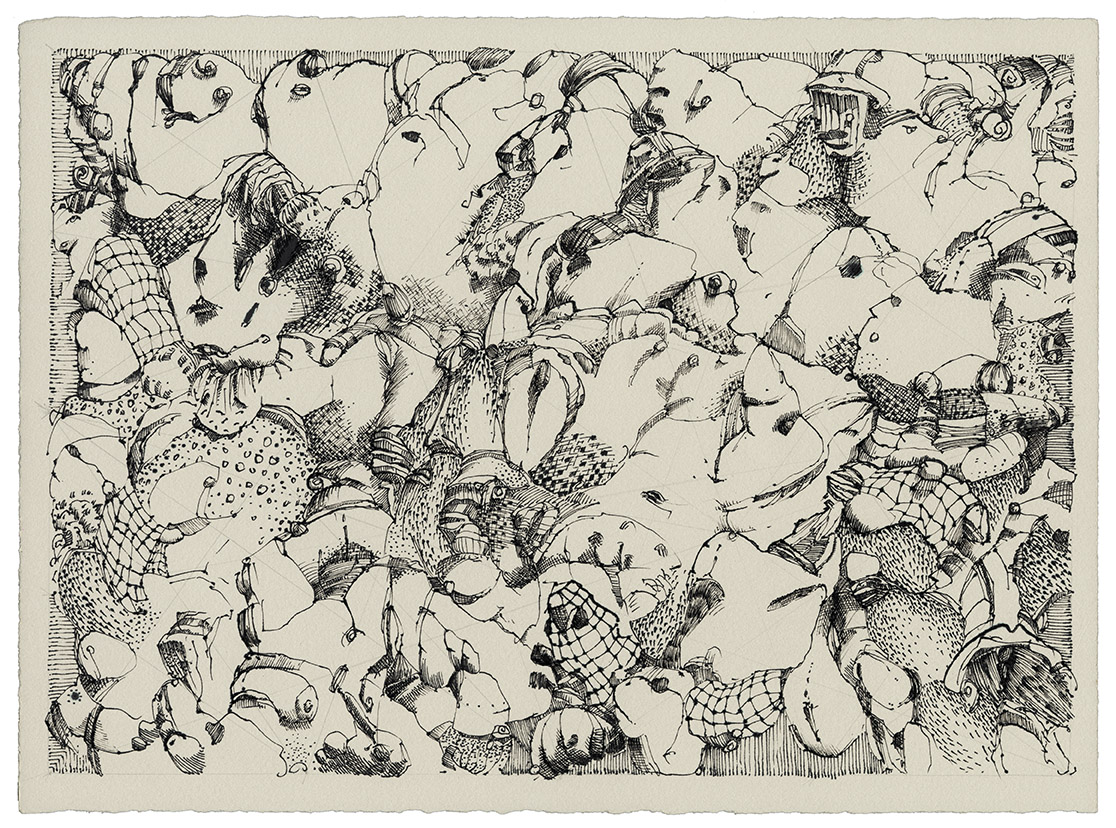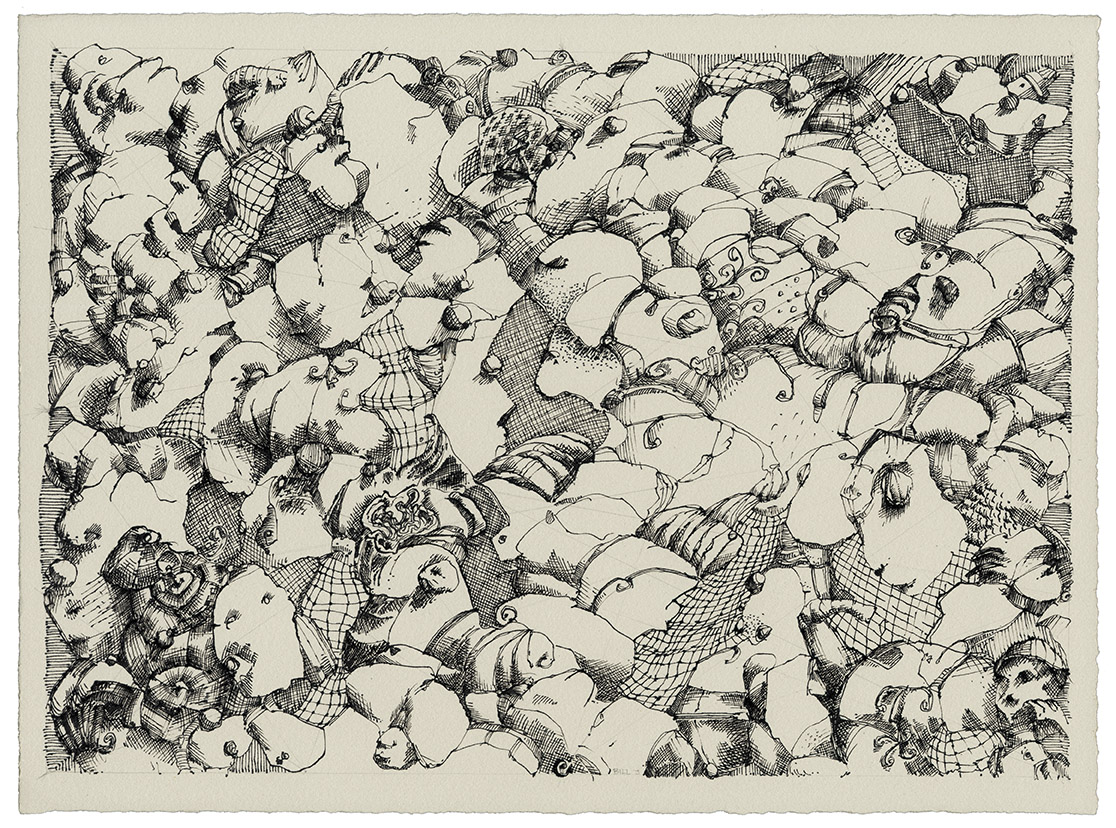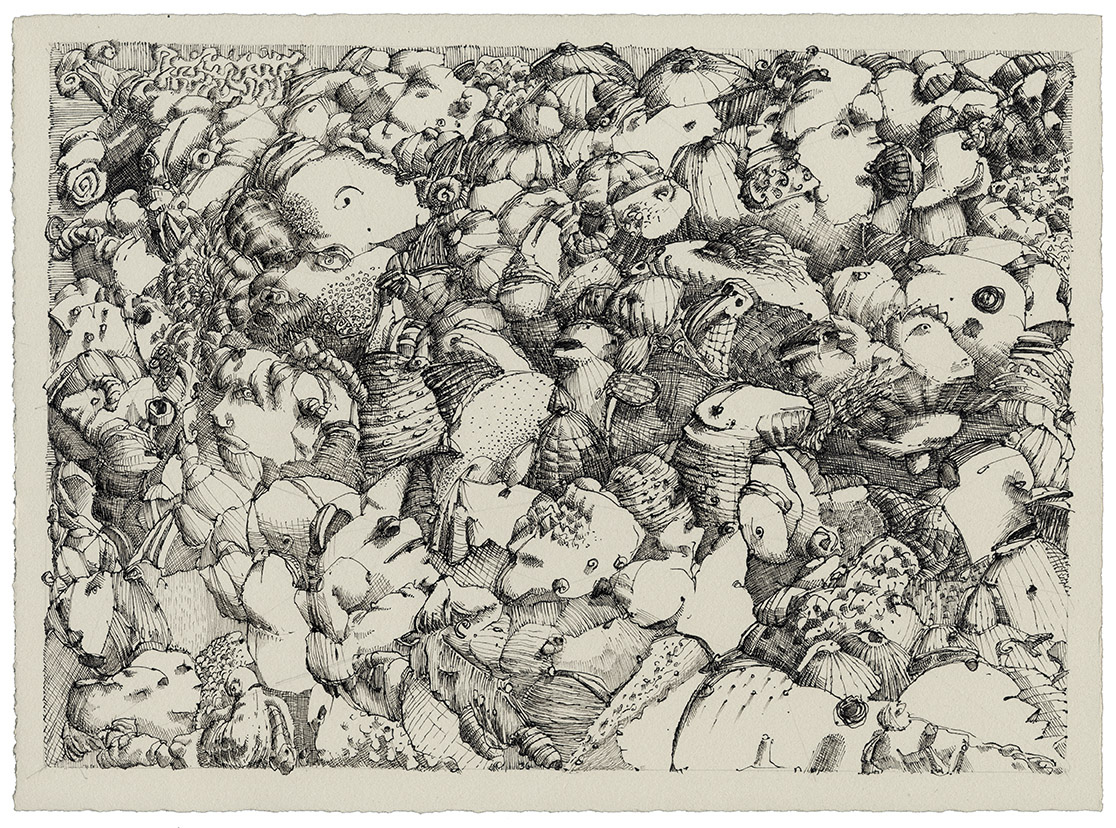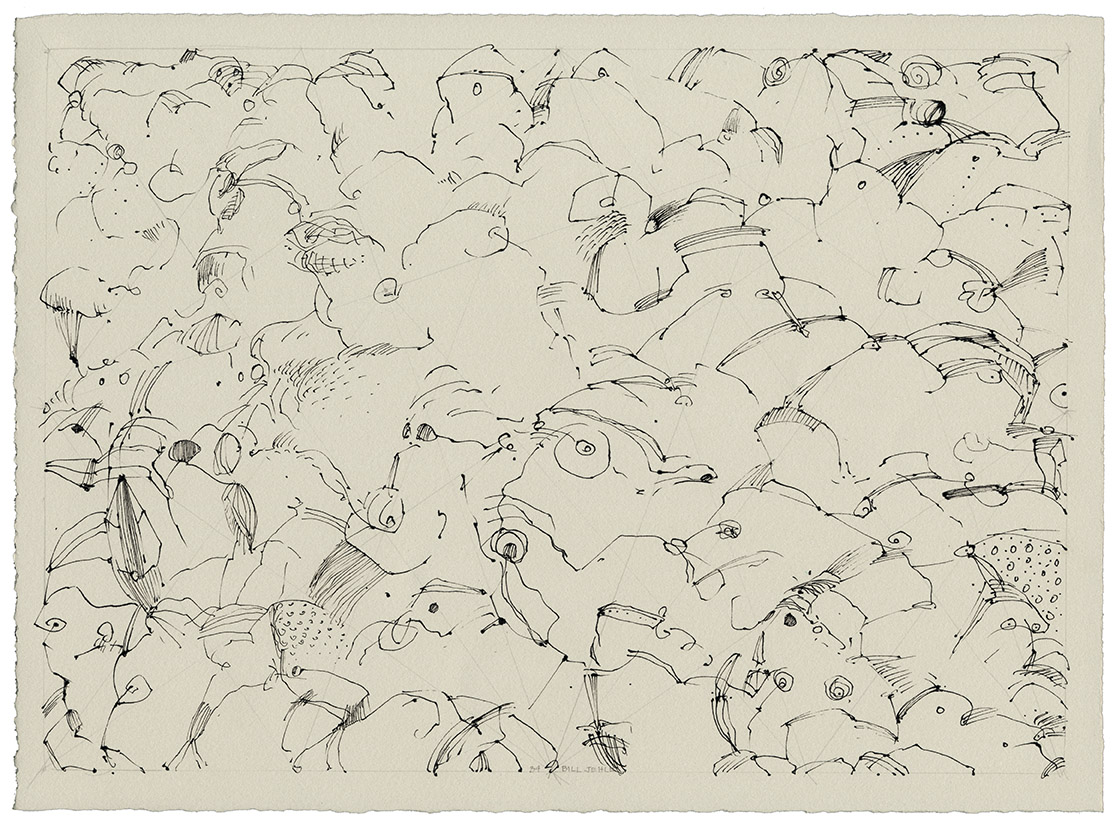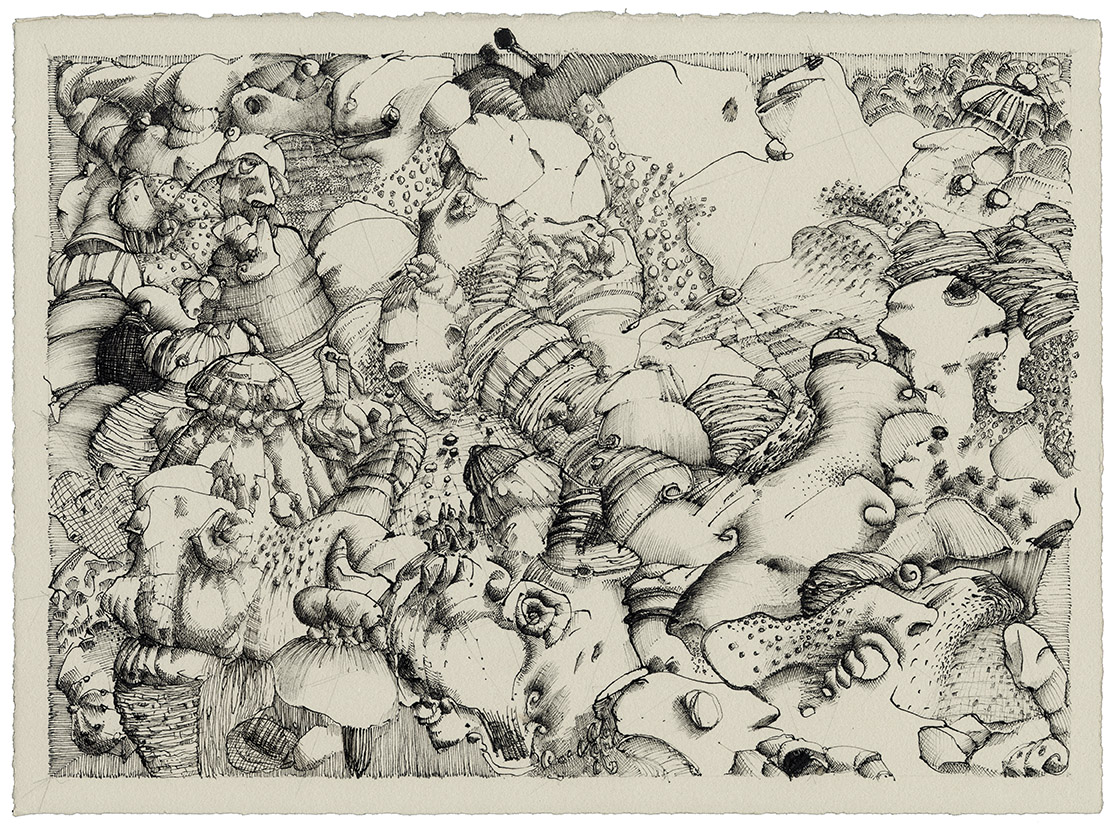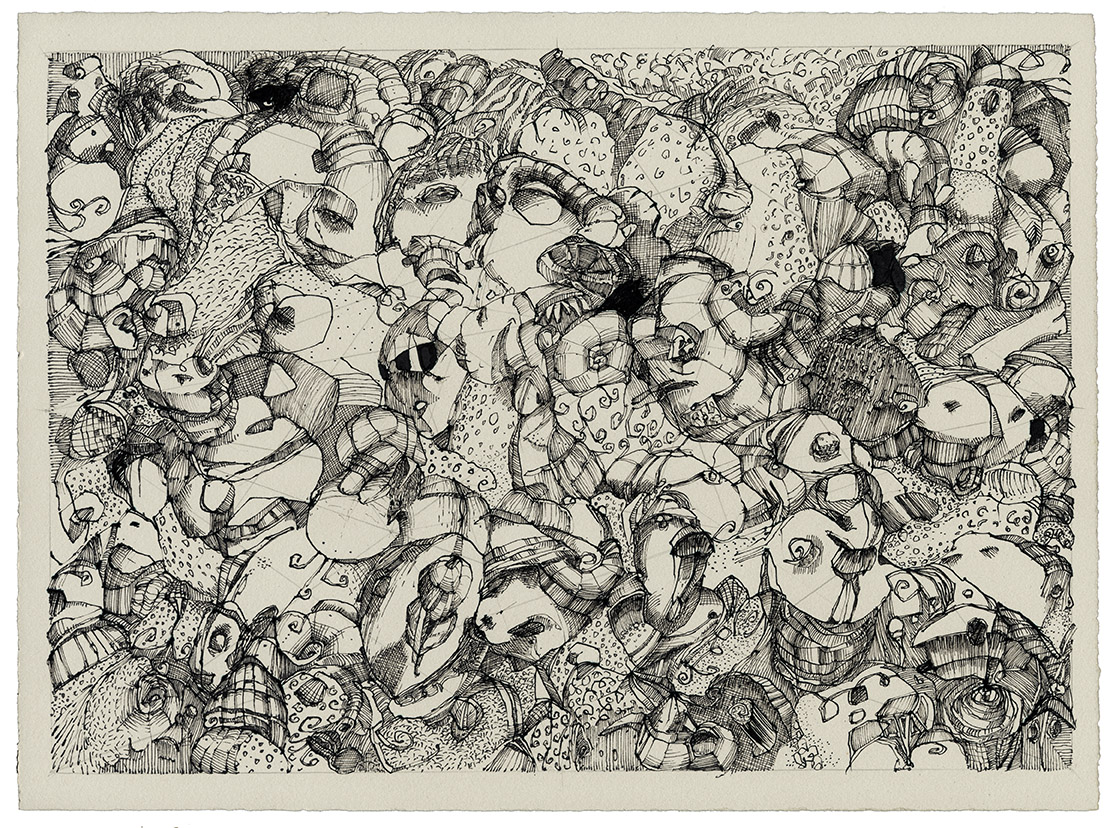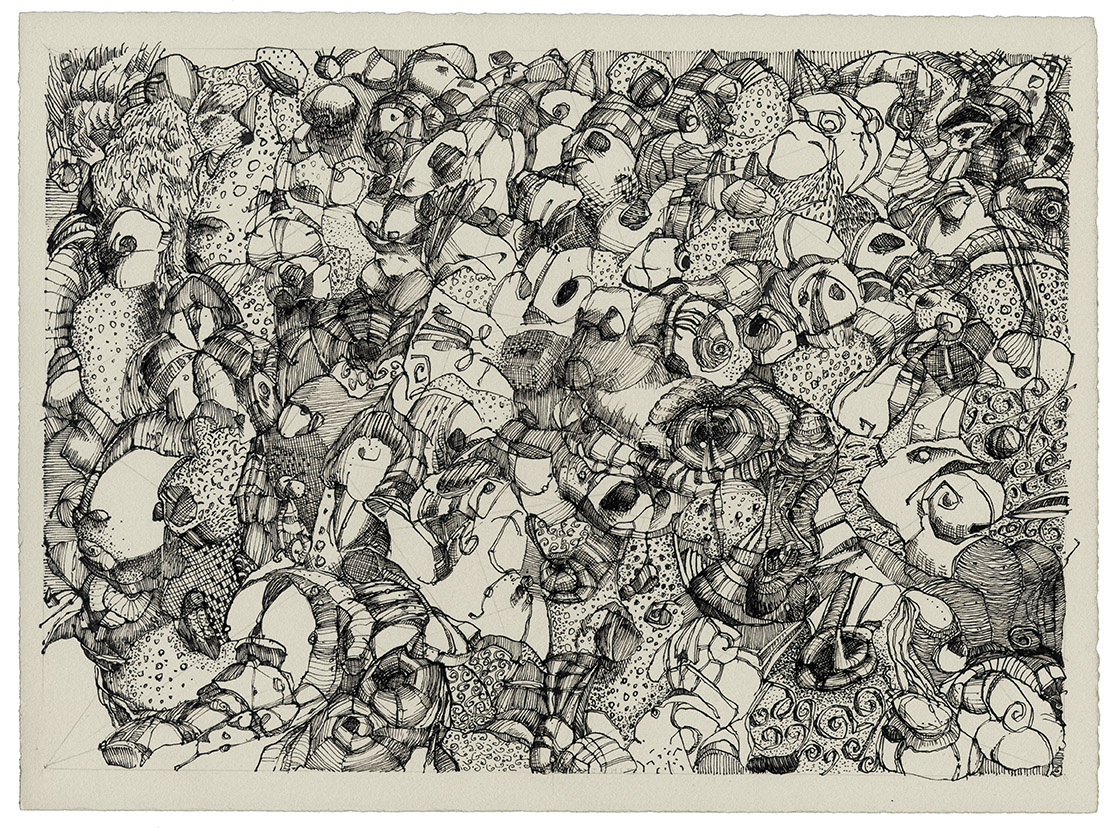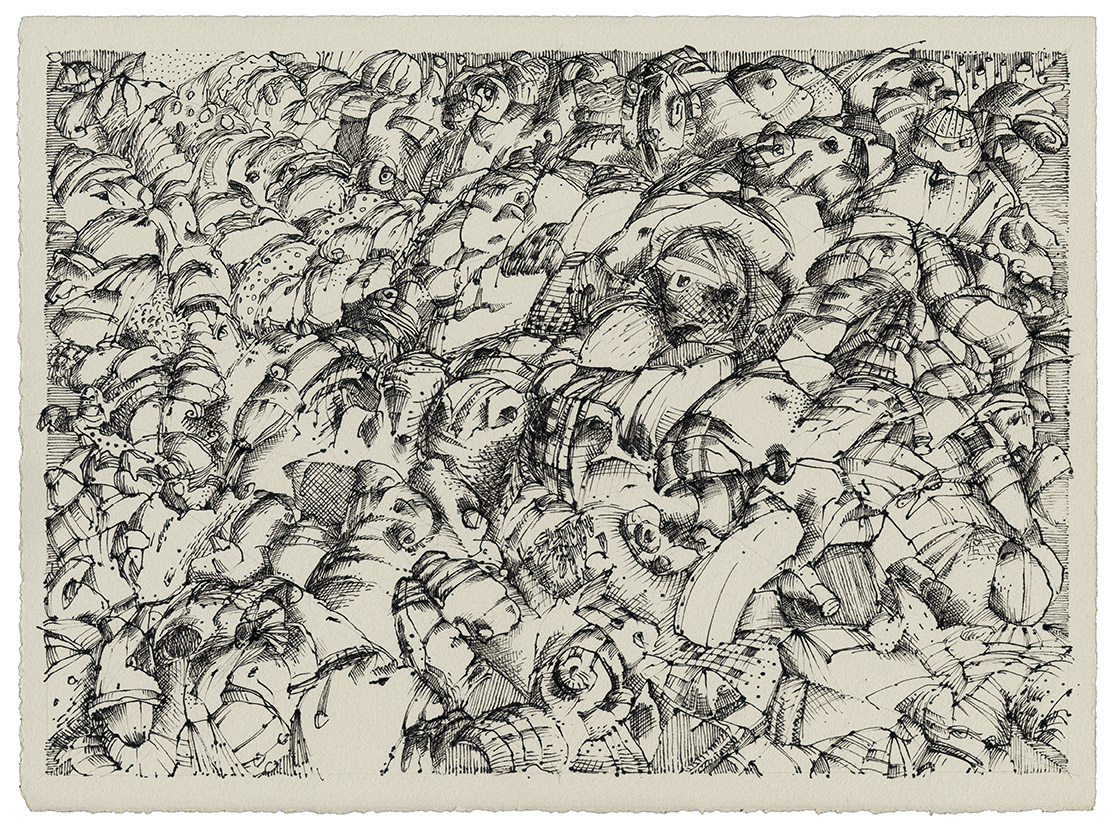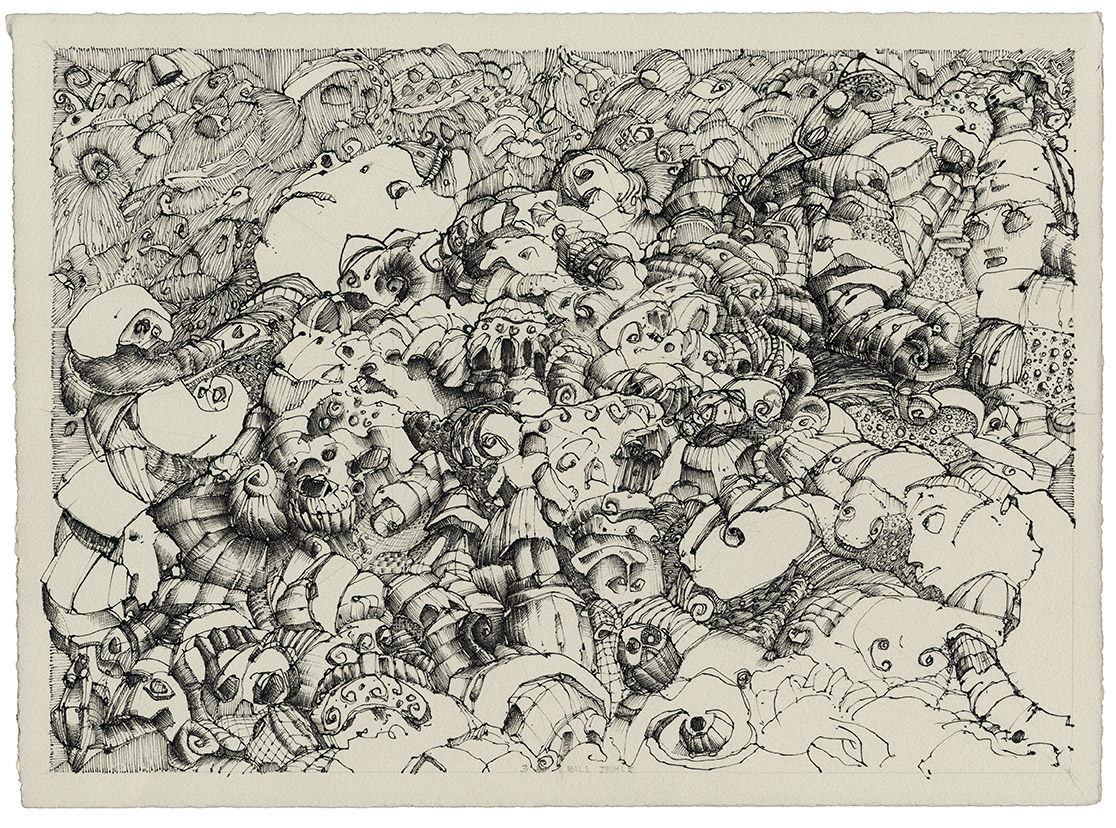At the heart of these drawings is a Baroque emphasis on disorder in which linear time and geometric planning are eschewed in favor of more natural arrangements. A kind of frothy, bubbly organicism replaces classical structure, leaving the viewer slightly unmoored and with a Goya-esque fear that nature might overwhelm reason. Deep space and proximity are confounded with near- three dimensional modeled form dissolving into expanses of white paper and darkened “holes” doubling as flat inkspots. That spatial ambiguity is crucial to understanding the real importance of Jehle’s practice: it allows that entropy and ruin lie very close to generation and renewal. The drawings remind us that with the dissolution of a blind commitment to progress as promised by Modernism comes the release of energy, creativity and imagination. In lieu of the utopian, contemporary existence seeks incompletion, always the non-fixed, recombinant, and ecologically interconnected, not a soon to be completed project. Ideas spiral around, form new synapses and relationships so that we might meditate on such questions concerning, for example, the human impact on or place in our environment. From an initial inspection the pictures resemble topographical maps, but instead of charting terrain for easy travel, they map how dreams, poetry and artistic observation are necessary to negotiate past, present and future.
The graphic works of Bill Jehle have many art historical antecedents from the hybrid creatures of Hieronymous Bosch to Surrealism’s automatic writing and stream of consciousness imagery, German Expressionist caricatures, the ink drawings of Picasso, Jackson Pollock’s swirling cosmic seas, and more recently, the head comics of the psychedelic age. As with most contemporary art, the preoccupation is not on formal innovation and rule breaking but on a synthesis of such traditions and influences with personal experience and current events. Rather than a resignation from the task of the “shock of the new”, this embrace of often conflicting approaches and narratives, allows for an unprecedented freedom of expression and a hybridity with unlimited combinations. That sense of ever multiplying possibility, metamorphosis, and infinite connections characterizes Jehle’s constantly morphing and connecting shapes. Owing perhaps to what one critic recently described as our “and/also” culture as opposed to an “either/or” culture , his is a world where boundaries are no longer secure and the basic rational structures and binary relationships relied on since the Enlightenment are undermined by a delirious mélange of visuals with no discernible order or hierarchies. Hewing to recent descriptions of “visual culture” in which fine art, illustration, and popular culture have equal influence on visuality, here stylized cartoon characters, beautifully rendered animal/human/plant forms merge seamlessly with architectonic and natural landscape features. Body orifices and genitalia cavort with evocations of death’s heads, clowns, and catastrophic weather. Devilishly playful and willfully asymmetrical, united primarily by fine draughtsmanship, and the rich tonalities resulting from varied line, “textured” cross hatchings and pointillistic detailing, they are as much involved with the viewer’s absorption into a pleasurable visual experience as they are with metaphors for the mind or suggestions that the Internet Age might be ensnaring us in a Piranesian web of nightmarish associations.
-Constance Mallinson
